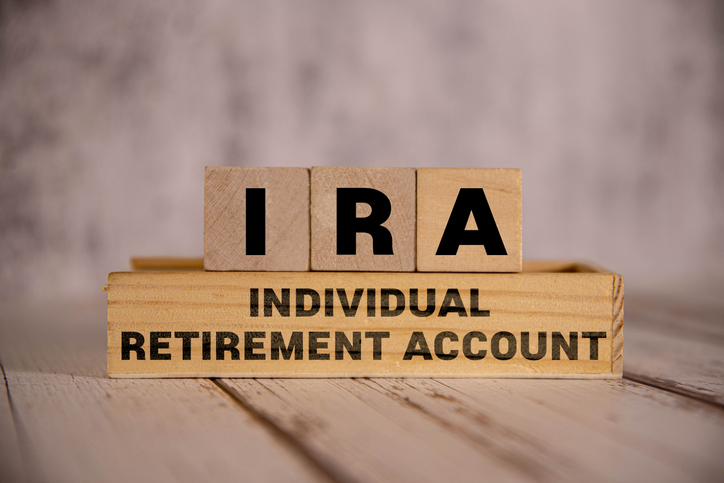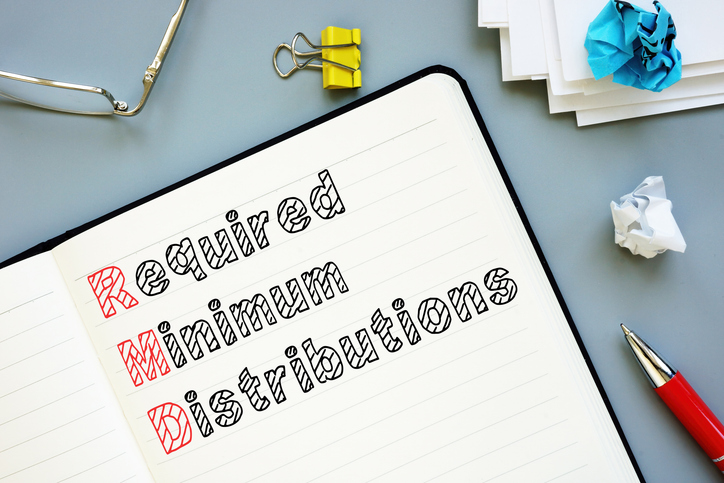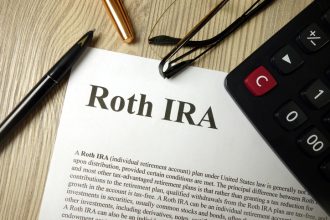If you need retirement funds for living expenses now, paying taxes on a Roth conversion may cost more than it saves. But, if you plan to keep the money for growth or pass it on to heirs, a conversion can help you avoid future required minimum distributions (RMDs) and provide tax-free income for beneficiaries. To show how this could work, let’s consider the example of a 67-year-old with $680,000 in a 401(k) who will begin RMDs at age 73.
If you are considering a Roth conversion, a financial advisor can help you see how this strategy fits into your goals.
How Required Minimum Distributions (RMDs) Work
RMDs are rules enforced by the IRS that apply to pre-tax retirement accounts such as traditional IRAs, 401(k)s, 403(b)s, and similar plans. These rules require you to take minimum annual withdrawals once you reach a set starting age. The SECURE 2.0 Act raised the RMD starting age to 73 beginning in 2023, and it is scheduled to rise again to 75 starting in 2033.
The purpose of an RMD is to make sure you eventually pay taxes on the money in your accounts. If you could leave these funds untouched forever, pre-tax accounts would allow permanent tax deferral. RMDs only apply to pre-tax portfolios. Roth IRAs are exempt from RMDs during the original owner’s lifetime. Roth 401(k)s were previously subject to RMDs, but this requirement was eliminated starting in 2024. Taxable brokerage accounts are not subject to RMDs.
The way the RMD rules apply depends on the account type. For IRAs, you can aggregate the total RMD across all traditional IRAs and withdraw from one or more of them. For 401(k) and other employer plans, you must calculate and take the RMD separately from each account. Withdrawals can be made in any pattern during the year, so long as the total required amount is withdrawn by December 31.
RMDs are calculated using two factors: your age and the account balance at the close of business on December 31 of the previous year. For example, if you are 75 years old and your account balance was $1 million on December 31, 2025, the IRS Uniform Lifetime Table1 gives a distribution period of 24.6. Your RMD for 2026 would be $1,000,000 ÷ 24.6 = $40,650.
If you are 67 years old, you still have six years before RMDs begin under current law.
How Roth Conversion Strategies Are Used to Avoid RMDs

As mentioned earlier, RMDs do not apply to Roth IRAs. This is one reason many retirees think about converting a 401(k) or traditional IRA to a Roth account. If you convert, you will never have to take RMDs during your lifetime. Heirs who inherit a Roth must still follow distribution rules under the SECURE Act. Most non-spouse beneficiaries must empty the account within 10 years, but the withdrawals remain tax-free.
Roth conversions come with rules of their own. Each conversion starts a five-year clock that limits when the converted funds can be withdrawn without penalty. If you are over 59½, this rule does not affect earnings, but it can still apply to the converted amount if withdrawn too soon.
The main cost of converting is taxes. Money moved from a pre-tax account to a Roth is treated as income in that year. Let’s work through an example of $75,000 in wages and a $10,000 conversion:
The main cost of converting is taxes. Money moved from a pre-tax account to a Roth is treated as income in that year. Let’s work through an example of $75,000 in wages and a $10,000 conversion:
- Add your gross income: $75,000 (wages) + $10,000 (conversion) = $85,000
- Subtract your standard deduction (single filer in 2025): $15,7502
- Taxable income = $85,000 – $15,750 = $69,250
- Apply 2025 tax brackets for single filers:
- 10% on first $11,925 = $1,193
- 12% on next $36,550 ($48,475 – $11,925) = $4,386
- 22% on next $20,775 ($69,250 – $48,475) = $4,571
- Total federal tax = $10,150
Without the conversion, taxable income would have been $59,250 and tax about $7,949.
- Extra tax from the conversion: $10,150 – $7,949 = $2,201
If you are older than 59½, you may use funds from your retirement account to pay the tax bill, but that reduces your portfolio value.
The benefit of a Roth is that you pay taxes now for tax-free growth later. And the longer the money stays invested, the more this helps. Younger investors with small conversions often gain the most. Retirees with bigger balances and less time may not recover the upfront tax cost.
You can also delay your first RMD until April 1 of the year after you turn 73 or 75, based on your birth year. But delaying means taking two RMDs in one year. And this can raise your tax bill, push you into a higher bracket, or increase Medicare premiums.
Should You Convert Your Portfolio?
Let’s look at how that would work here. If your goal is to leave your 401(k) as part of an estate plan, a Roth IRA can help by avoiding RMDs and giving heirs tax-free withdrawals. If you need the money for income, the case is weaker because the taxes from converting are often higher than the taxes from RMDs.
Say you convert your 401(k) in five equal parts to reduce annual taxes:
- Conversion per year: $680,000 ÷ 5 = $136,000
- 2025 single filer brackets:
- 10% on first $11,925 = $1,193
- 12% on $36,550 ($48,475 – $11,925) = $4,386
- 22% on $54,875 ($103,350 – $48,475) = $12,073
- 24% on $32,650 ($136,000 – $103,350) = $7,836
- Total tax: $1,193 + $4,386 + $12,073 + $7,836 = $25,488
- Effective rate: $25,488 ÷ $136,000 = roughly 18.7%
- Five years of conversion: $25,488 × 5 = $127,440
- Roth IRA value after taxes: $680,000 – $127,440 = $552,560
Now compare this with taking RMDs at age 73:
- Account value: $680,000
- Divisor at age 73: 26.5
- First RMD: $680,000 ÷ 26.5 = $25,660
- Tax at 12% bracket: $25,660 × 12% = $3,079
- $127,440 ÷ $3,079 = roughly 41 years
- Since RMDs increase each year, the catch-up would occur sooner than 41 years.
You would need to take RMDs for about 41 years before the taxes matched what you already paid for the Roth conversion.
There are many ways to compare a Roth conversion with RMD requirements. A useful starting point is to weigh the total taxes paid on the conversion against the taxes that would apply to required minimum distributions. The outcome depends on your income level, tax brackets and time horizon. Results can vary significantly from one situation to another.
Bottom Line

Should you manage RMDs by converting your retirement account to a Roth IRA? It depends on your objectives. A Roth IRA can eliminate lifetime RMDs and provide heirs with tax-free withdrawals, which may be attractive for estate planning. But if your main goal is to reduce taxes, the numbers often work differently. For many retirees, the up-front cost of paying conversion taxes exceeds the income taxes that would have been owed on RMDs over a typical retirement horizon. The trade-off is less about short-term savings and more about how you want to structure your income and legacy.
Retirement Planning Tips
- Whether you are considering a Roth conversion or another tax planning strategy, a financial advisor can help you create a comprehensive plan to minimize your liability. Finding a financial advisor doesn’t have to be hard. SmartAsset’s free tool matches you with vetted financial advisors who serve your area, and you can have a free introductory call with your advisor matches to decide which one you feel is right for you. If you’re ready to find an advisor who can help you achieve your financial goals, get started now.
- If you want to build your savings up consistently, consider setting up automatic transfers from your checking to your savings accounts. This approach could help you make saving a routine part of your financial life.
Photo credit: ©iStock.com/AndreyPopov, ©iStock.com/Zolak, ©iStock.com/Andrii Dodonov
Read the full article here














